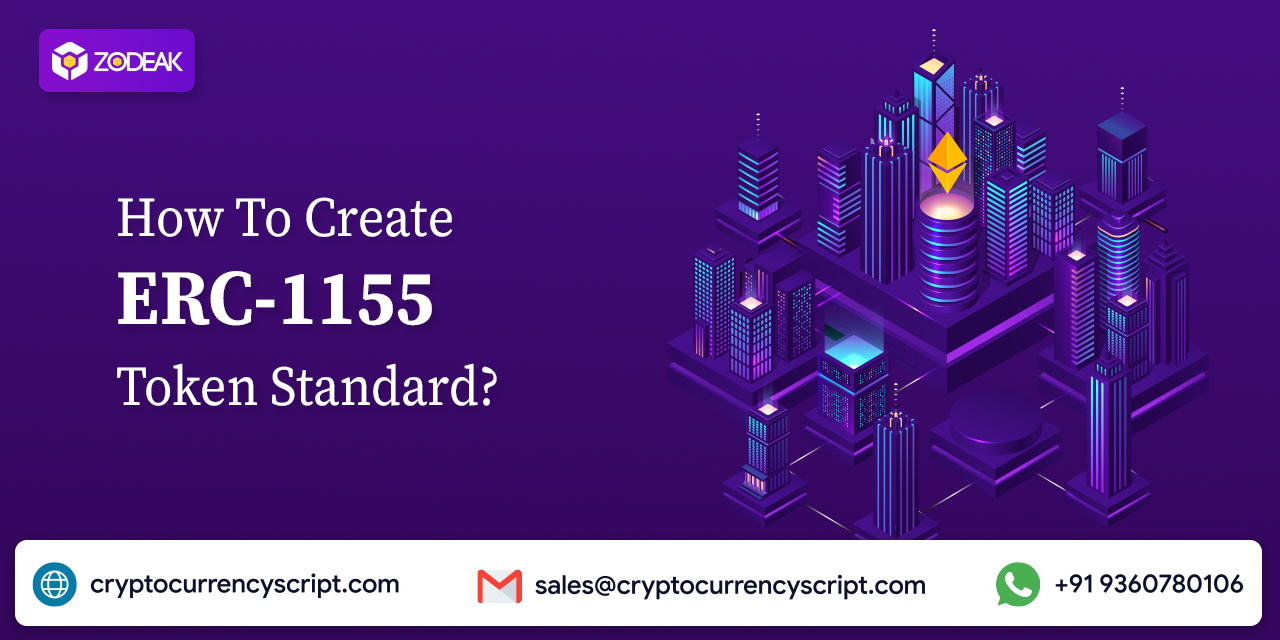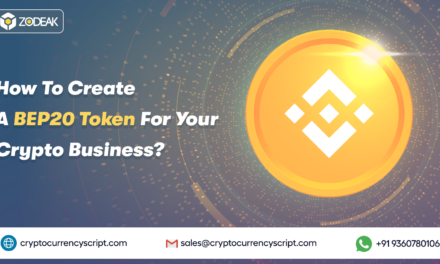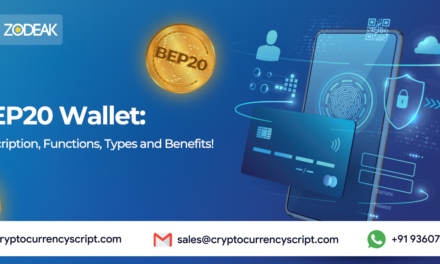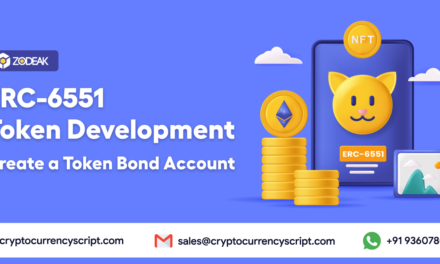ERC-1155 is a token standard embedded into the Ethereum network that presents a revolutionary approach by allowing the production of both fungible and Non-fungible tokens (NFTs) inside of a smart contract. The shortcomings of earlier standards such as ERC-721 and ERC-20 which struggled with exorbitant gas fees and the intricacy of representing several tokens in a single contract are addressed by this innovation.
An In-Depth Explanation Of ERC-1155
The ERC-1155 token standard is an all-inclusive structure that includes both fungible and non-fungible components. These tokens are contained in smart contracts on the Ethereum blockchain, and unique smart contract IDs are used to track token ownership and quantity owned by each account precisely. The smart contract ID automatically updates to reflect the new owner whenever ownership is transferred, allowing for smooth transitions.
Benefits are abundant in the field of ERC-1155. More affordable, minimizes gas fees, and adds metadata storage capabilities. Combining fungible and NFTs under one contract improves flexibility and makes it possible to manage various token kinds more efficiently. In particular, ERC-1155 works well with ERC-20 and ERC-721, and receiving hooks increases its customizability.
However, there are some complexities to this flexible standard. Compared to single-token standards, implementing ERC-1155 necessitates a more involved procedure, and support from current apps is few. To reduce vulnerabilities and guarantee secure functionality, a thorough audit is necessary.
Beyond tokenization, ERC-1155 has long-term implications. It has the potential to have a significant impact on the financial scene and be useful in representing securities, commodities, and other financial instruments. It has also made a significant contribution to the expansion of decentralized finance(Defi) applications.
Although its full consequences are still unknown, ERC-1155 is a dynamic token standard that has the potential to completely change the way tokens are exchanged, handled, and regulated. It is at the forefront of blockchain innovation and is ready for further research and deployment because of its adaptability and ability to transform many industries.
How To Create ERC-1155?
To begin creating ERC-1155 tokens, take the following methodical steps…
Make Development Environment
Make sure you have the necessary tools before beginning the process. Install the Visual Studio Code editor and Node.js prerequisites to create a stable development environment.
Create a New Solidity Contract
To start, create a new Solidity smart contract. For a smooth integration process, import the ERC-1155 interface.
Token Metadata Define
Define the ERC-1155 token’s metadata architecture. This means defining the unique functions and qualities that are contained within each token.
Token Minting And Burning Integration
Integrate mint and burn functions to enhance the usefulness of your tokens. These upgrades strengthen the extensive token management system.
Integrate Transfer Functionality
Develop further features to improve token liquidity by enabling the easy transfer of tokens across various user accounts.
Integrate Batch Transfer Functionality
Increase productivity by adding batch transfer features which allow for the quick execution of many token transfers.
Deployment
Deploy the cleverly crafted smart contract into the Ethereum blockchain via a development network like Ganache or Telnet.
Testing
Conduct thorough testing to verify the newly deployed ERC-1155 contract’s effectiveness. Make sure that its actions correspond smoothly with what is expected of it.
Token Interaction
Use libraries such as ethers.js or web3.js to interact with the ERC-1155 token. Observe how it operates, making sure that transfers, burning, minting, and balance queries all go smoothly. The accomplishment of these tasks confirms the effective generation of your ERC-1155 token.
ERC-1155 Features And Functions
The official Ethereum website provides extensive literature describing the features and functions of ERC-1155. Here is a summary of these essential features…
- ERC-1155 optimizes the process by facilitating numerous efficient token transfers compared to individual transfers.
- The safe storage of Metadata including names, photos, and descriptions improves the token’s informational integrity.
- By burning tokens, one can effectively stop their circulation and remove them from the system permanently.
- Rather than burning each token one at a time, ERC-1155 allows for more efficient batch burning.
- Within a smart contract, this standard supports many token types including fungible and NFTs.
- Gas fees are significantly decreased when many token transfers can be completed in a single transaction.
- Batch balance procedures provide efficiency and are especially useful for applications that need to check the balance of several tokens.
- ERC-1155 is a workable method for approving large-sale token transfers because it allows for batch verification and approval of token transfers.
- Using a receive hook feature, ERC-1155 transfers to a new ERC-1155 contract address and triggers bespoke logic. This adaptability is useful for customized token transfers across various steps.
- Each token has a unique identifier, so it is simple to represent NFTs and their unique assets.
- The token transfer follows the safe transfer rule which lets the sender specify preconditions that need to be satisfied for the token transfer to take place.
ERC-1155’s adaptability within the Ethereum ecosystem is emphasized by the fact that it enables the smooth movement, maintenance, and monitoring of a wide variety of token types.
Conclusion
ERC-1155 tokens reduce the overhead of deploying separate contracts for each type of token by enabling multiple token types to be bundled together within a single contract. Allows for greater efficiency and flexibility in managing various assets including digital collectibles, in-game items, and more. Because of its capacity to expedite development and lower gas fees on the Ethereum network, this standard has grown in prominence. Approaching an Ethereum Token Development Company is the right thing to do in creating the ERC-1155 Token standard.





